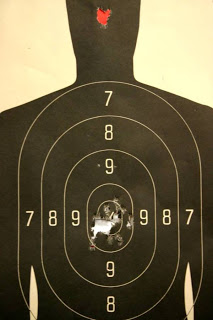It's all rather inane since they all still follow the UCLA Analytical model. Whether you consider the traditional 3 Act model, his proposed 5 act model or Hauge's 6 act model, it's just a tool for organizing thoughts. I'd been more impressed if he'd talked about non-linear screenwriting which truly does bypass the act structure as normally perceived. But any linear story can be arbitrarily cut into pieces.
Below is a quick synoposis of the systems:
Code:
Act Structure
[U][B]3 5 6[/B][/U]
1 1 1 INTRO + STATE OF PRE-EXISTING CONFLICT
1 2 2 PUT AT ODDS WITH PRE-EXISTING CONFLICT
2 3 3 TURNING POINT
2 4 4 SPIRAL/ESCALATION OF CONFLICT
3 5 5 CLIMAX
3 5 6 CONCLUSION/RESOLUTION
The top is the number of acts. The numbers in the columns are the assigned "act numbers". Carve it up how you will, the movie is still the movie. Some would count "act transitions" as separate acts. I've read about 9 and 11 act structures with over 20 "key" points. Let's be real.
From my perspective, the value of the "act structure" is for teaching and learning. Once it becomes second nature, it becomes possible to create variations. But as a tool, you can use it to create new orderings.
4 SPIRAL/ESCALATION OF CONFLICT
3 TURNING POINT
1 INTRO + PRE-EXISTING CONFLICT
2 PUT AT ODDS
5 CLIMAX
6 CONCLUSION
This 're-ordering' provides for a novel approach. Others are possible. Leaping into the hottest point, then reflecting back, then zipping forward to the conclusion. For a movie to have any merit, there must be character change and conflict(s) to be resolved. How, when and where is up to the writer. To make blanket statements that X must happen by page Y or before Z can happen is ludicrous. Equally silly, IMO, is to say there are N acts. If it helps the writer organize their thoughts for writing, fine. But it is just a tool. Honestly, I don't plan my transition from "Act 1" to "Act 2". It just happens as a consequence of the dynamics of the actors and events.
But as with any art, you need to master the basics ("rules") before you can break them. And as was pointed out, you break the rules only when you've shown you've mastered the medium (A-list). Just like the "180 degree Rule" or "Rule of Thirds", these are aesthetic guidelines. The "Act Structures" help guide aesthetic story development. Not all stories fit this structure, and not all stories are adaptable to the screen.
I had a writer friend who raled against the 3 Act structure, but I swear nearly every script he wrote followed the same 3 Act structure. He denied it because "he didn't write it that way intentionally". And I agree. It's not about how you write, it's just a natural form that good stories often take, whatever way you choose to parcel it up.


 Cracker Funk, is that you?
Cracker Funk, is that you?

